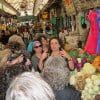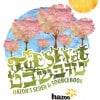Tuesday, February 7th, 2012 Urban Adamah, 1050 Parker St, Berkeley, CA Early Bird Ticket Cost $18 through Thursday, January 19 $20 per person $25 at the door Plus a can of food for the food bank (more…)


Tuesday, February 7th, 2012 Urban Adamah, 1050 Parker St, Berkeley, CA Early Bird Ticket Cost $18 through Thursday, January 19 $20 per person $25 at the door Plus a can of food for the food bank (more…)

New York November 17th / 20th Cheshvan Dear All, This is the period of giving thanks. Thank you: to all the people who commented on (and re-circulated) the piece I wrote last week on Federations. There are various comments on our website, and also on Facebook and elsewhere. We welcome your further feedback. Thank you: to the 17 participants in our second Israel Sustainable Food Tour, and to our partners on that tour at The Heschel Center for Environmental Learning and Leadership. We’re really psyched to be playing a role not only in developing more sustainable food systems in the US, but also in directly and indirectly both learning from and supporting some of the amazing work that’s starting to happen in Israel. You can see photos here. (And if you’re looking for an interesting Thanksgiving or Chanukah gift for someone – check out Negev Nectars.) (more…)
In this video, Nigel Savage, Executive Director of Hazon, teaches a session on “How to Create a Great Tu B’Shvat Seder” at the 2010 Food Conference West. Learn more about Tu B’Shvat and download Hazon’s free resources.

by Nigel Savage January 14, 2011 Next Wednesday night, January 19th, there’ll be a full moon in the sky: the full moon of Shvat. The indigenous Israelites from whom we descend celebrated this as the start of the year for the natural world. Like lots of elements of Jewish tradition, we never forgot it, even as its meaning has changed over time. Skip forward to 5771, aka 2011. Tu B’Shvat’s a great holiday, and there’s every likelihood there will be a record number of Tu B’Shvat seders this year. But here’s a question: what’s all this stuff about the four worlds? (more…)

As the largest Jewish environmental organization in the country, Hazon hopes you will celebrate the holiday of Tu B’Shvat as a Jewish Earth Day and use our website resources to rekindle or deepen your feelings of gratitude for the bounty of the earth and take more steps towards preserving our world. Tu B’Shvat begins sundown January 19th and we encourage you to hold a seder! In the Middle Ages, Tu B’Shvat was celebrated with a feast of fruits in keeping with the Mishnaic description of the holiday as a “New Year.” In the 1600s, the mystic kabbalist Rabbi Isaac Luria of Tzfat and his disciples instituted a Tu B’Shvat seder in which the fruits and trees of Israel were given symbolic meaning. The main idea was that eating ten specific fruits and drinking four cups of wine in a specific order while reciting the appropriate blessings would bring human beings, and the world, closer to spiritual perfection. The mystical kabbalistic Tu B’Shvat seder has been revived and is now celebrated by many Jews, religious and secular. Special haggadot have been written for this purpose, including our own. (more…)
